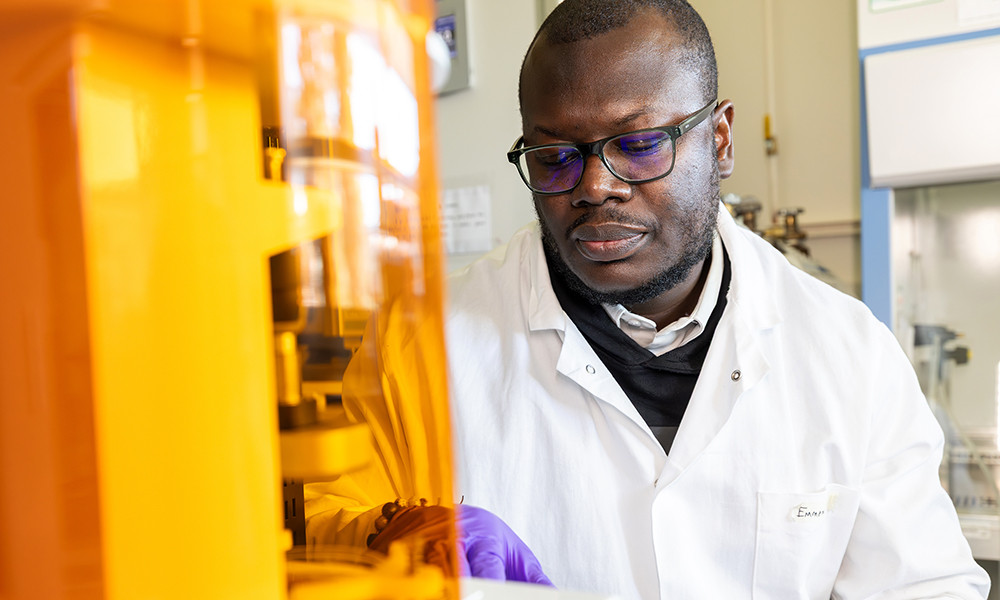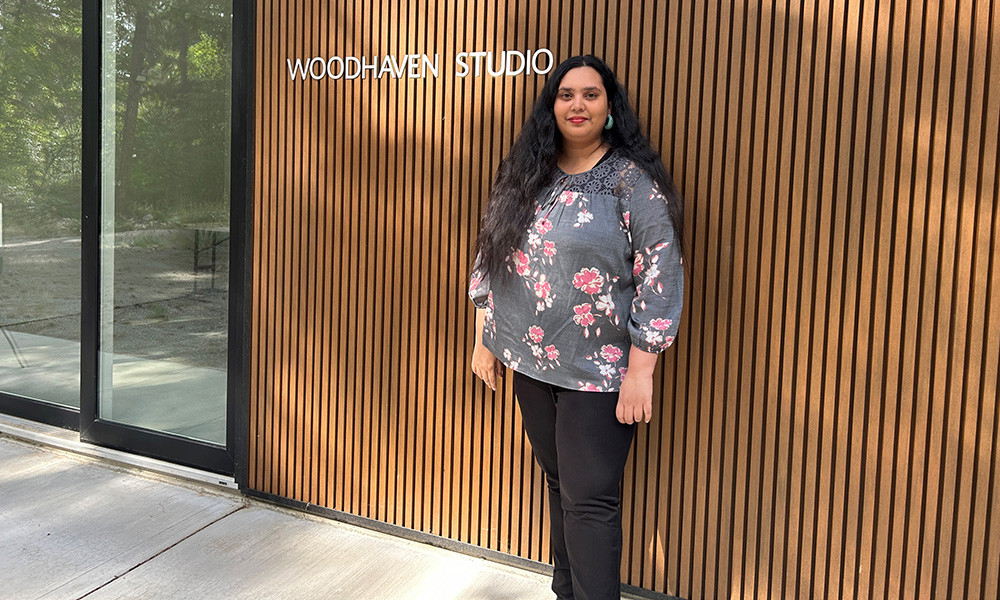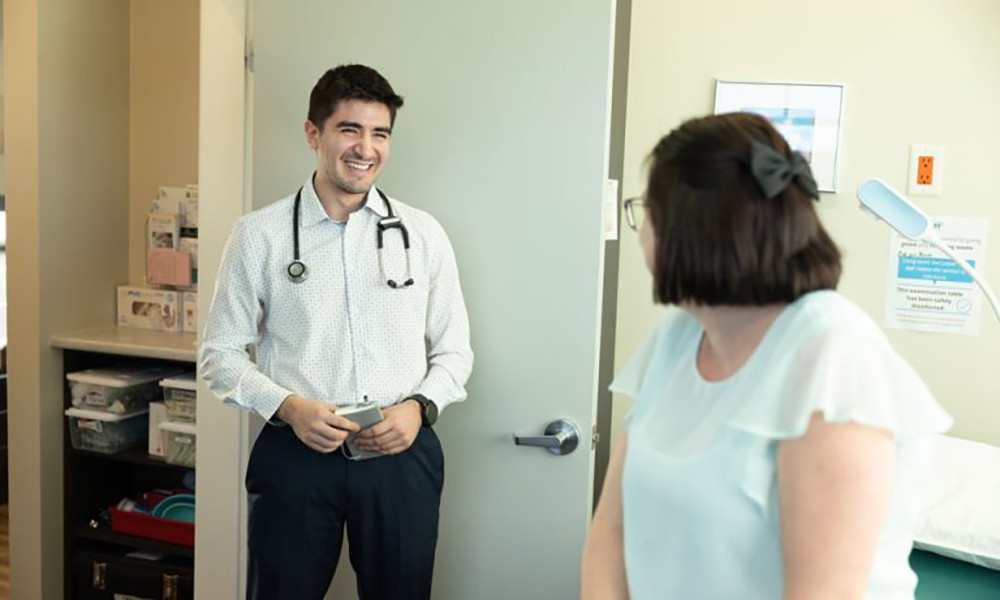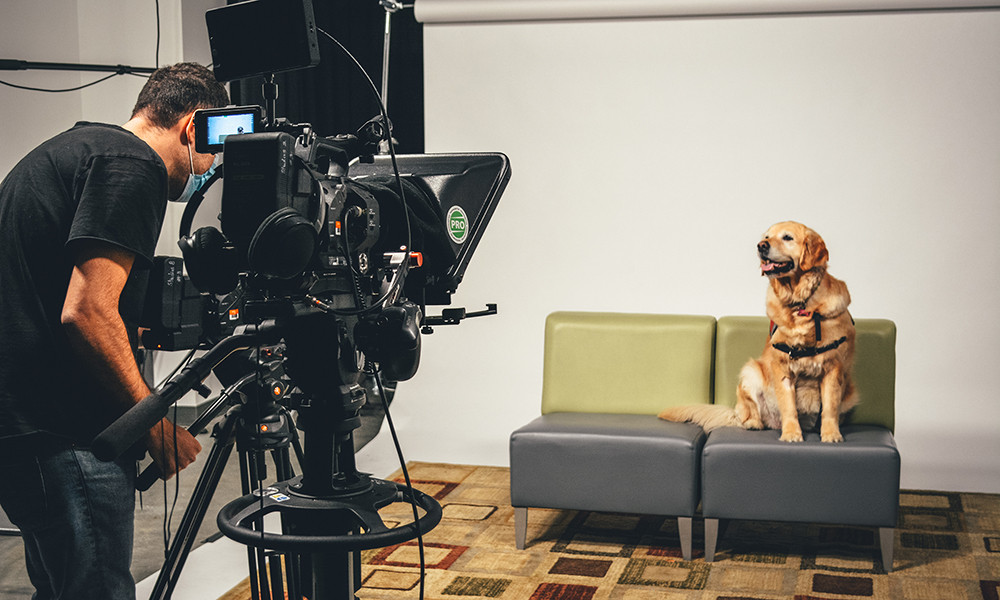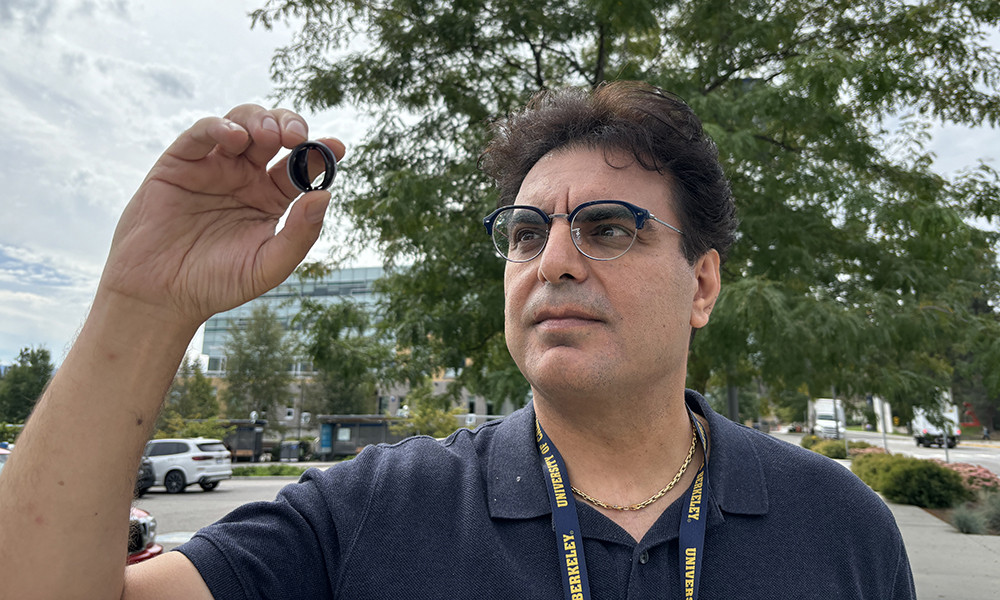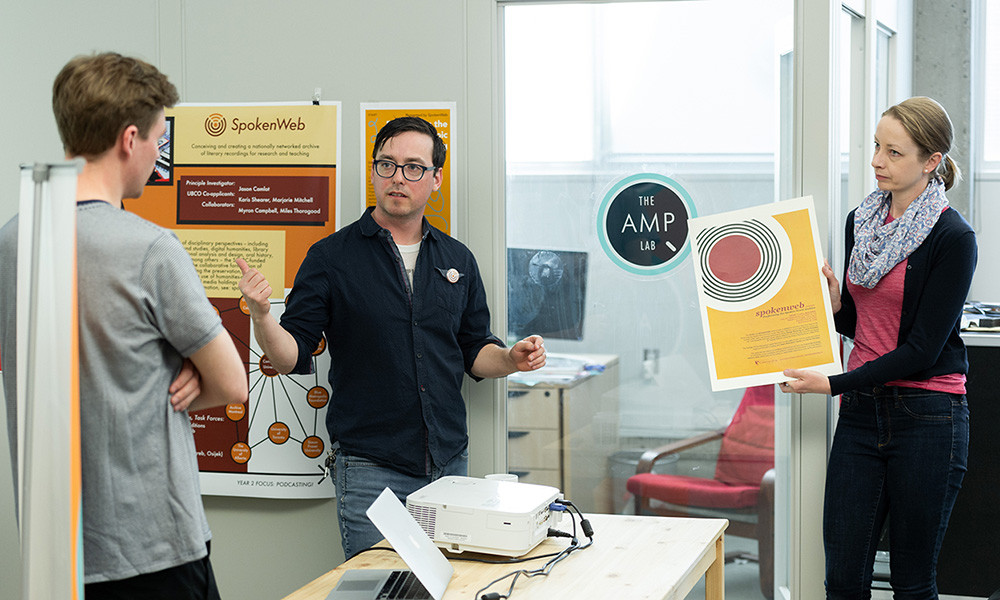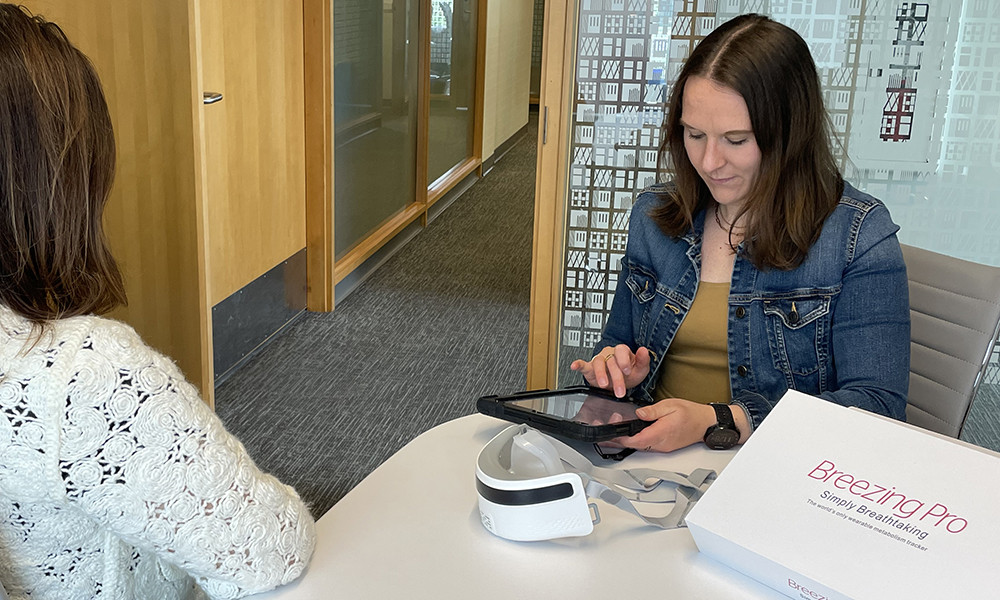
Dr Gino DiLabio and doctoral student Hossein Khalilian discuss their research paper about how quantum Coulombic interactions can manage and prevent unwanted cell damage from free radicals. The image created for this research made the cover of the Journal of the American Chemical Society.
A new study, published by a team of UBC Okanagan chemistry researchers, is creating a major rethink of how enzymes work. And how a quantum phenomenon helps an important enzyme control essential yet dangerous molecules.
Enzymes, also known as biocatalysts, are the tiny machines behind every process in living things, explains study co-author Hossein Khalilian, a doctoral student in the Irving K. Barber Faculty of Science’s Department of Chemistry. Enzymes make molecules that are crucial to life, while also breaking down molecules that are bad or unnecessary for us.
Radical enzymes represent an important class of biocatalysts that generate extremely unstable molecules—called free radicals—to enable a wide range of biochemical reactions. Free radicals are often negatively viewed, explains Khalilian. Uncontrolled ones contribute to serious conditions like cancer, autoimmune and neurodegenerative diseases. Yet, these molecules are essential for many biological functions and the body produces them as part of normal cellular functions.
The research, featured on the front cover of the Journal of the American Chemical Society, reveals that nature has developed a clever way to control these free radicals—using little-known quantum Coulombic interactions to manage them and prevent unwanted damage.
The researchers focused on an enzyme called viperin, which plays a role in the body’s immune response by producing and controlling highly reactive radicals that Khalilian describes as chemical loose cannons.
“While radicals can be useful, they can also cause serious damage if they’re not carefully controlled,” he says. “We’ve known for some time that viperin uses radicals to perform its function. But we didn’t expect to find quantum mechanical effects play such an important role in keeping that radical in check.”
Khalilian, who studies enzymes using computer modelling, explains that viperin is an antiviral enzyme activated as part of the immune response to many viruses. While running computer simulations to investigate viperin’s behaviour, he discovered that it uses a range of strategies, including previously unknown quantum Coulombic interactions, to get the radicals under control.
The Coulombic interaction is an electrostatic force between positive and negative charges, like the force that creates static electricity. The simulations reveal that the quantum version of these interactions is a key strategy employed by nature in radical enzymes to control the free radicals they use.
“This was something unexpected,” says Khalilian. “The radical was being gently held in place by Coulombic interactions to perform only the desired reaction. Like a magnetic tug, these forces are enough to stabilize the radical just long enough for the enzyme to do its job.”
Normally, he says, radicals like to move around or react with other things quickly, but in this case, something was keeping it still.
“These interactions are hard to see, and easy to overlook,” says Khalilian. “But it turns out it’s crucial. Without it, the radical would be too unstable to manage. It’s exciting because this is the first time quantum interactions have been shown to be this important in an enzyme. It gives us a new lens to look at biochemical reactions.”
This study provides evidence that the quantum Coulombic effect is likely a universal yet underappreciated feature of radical enzymes. The discovery could lead to new ways to design drugs, enzymes and catalysts.
The work doesn’t stop there, as principal investigator Dr. Gino DiLabio says ongoing studies are exploring whether this effect applies to other radical enzymes. If confirmed, it could reshape the traditional understanding of catalysis and boost advancements in biotechnology.
“Many modern medicines rely on reactions involving radicals,” Dr. DiLabio adds. “If we understand how nature controls them, we can also do it—perhaps more safely or effectively.”
The post Quantum discovery reveals how enzymes tame free radicals appeared first on UBC's Okanagan News.

